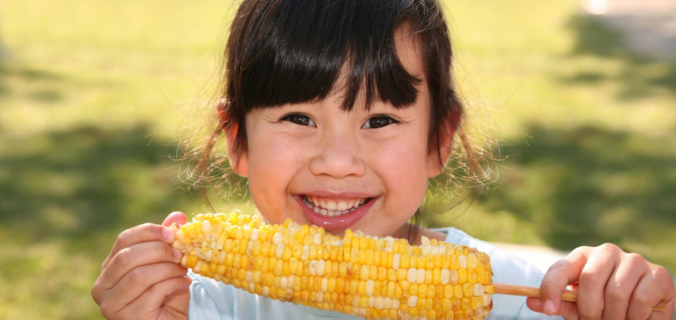It’s a struggle most parents know all too well. Children, for the most part, are not particularly fond of vegetables. Because they need a lot of energy for their growing bodies, biologically kids are more drawn to calorically dense items like meat and milk. Furthermore, a child’s palate is less developed than an adult’s. The bitter flavours of many vegetables may be appealing to older tongues. But to kids, they are much too potent and trigger an instinctual reaction to avoid, as bitterness in nature is often associated with toxicity. Finally, kids tend to pick up on social norms just like the rest of us. When they see other young ones in movies and television saying no to their veggies, they’re likely to follow suit.
With that being said, learning to love vegetables is incredibly beneficial for children. Plant-sourced foods are an essential part of a healthy diet. Fruits and vegetables are chock full of vitamins and minerals that contribute to healthy development. When children eat a varied diet, they are also less likely to develop problems like childhood obesity and the health problems that come with it. Furthermore, kids who do not eat vegetables are more likely to struggle in school compared to children who have balanced diets.
If you want to get your kids to eat more vegetables, you don’t have to order, cheat, or trick them into it. Kids are often much more open to new things than you may assume — you simply have to educate them and appeal to their sense of adventure. Try the following techniques to help open your child’s world and expand their palate to include more healthy, plant-based ingredients.
Educate with a Garden
When it comes to people in general, not just children, so much of our apprehension to try new things stems from the fear of the unknown. To a child, a squash isn’t unappetising because it’s a vegetable. They don’t want to try it because it looks weird and they don’t know what to make of it. A great way to bridge the gap and introduce your child to veggies is by growing them yourself in your own edible garden in the front yard
Front yard gardens look great, diminish the environmental impact of lawns, and provide families with fresh produce they can use in home cooked meals. Spending an afternoon working in the garden with your children also teaches them about life cycles and biology while providing a stress-reducing activity that is good for you both physically and mentally. To make sure your front yard garden doesn’t rankle neighbours, focus on keeping the area attractive with features like container gardens and edible flowers. Also, don’t forget to share your bounty– people aren’t going to complain if they get to enjoy the harvest as well.
Cut down on Bitterness
As mentioned above, one of the reasons kids avoid eating veggies is because their little tongues haven’t developed a taste for the bitter flavours many plants have. Reducing the natural bitterness in vegetables is an easy way to make them more palatable for kids so they’re more likely to enjoy them and clean their plate. A great way to cut down on bitterness is by adding flavours that kids already find appealing. Considering that fat is flavour, fatty additions like butter, cheese, and bacon are great at accomplishing the tasks. Other ways to mellow out bitter vegetables include cooking processes such as blanching and adding acid with ingredients like vinegar or citrus juice.
Vegetables are an important part of a wholesome diet, but many kids shudder when they see those green beans on their plates. If you want to encourage your children to eat more vegetables, educating them is your best bet. When kids get over their fears of the unknown, they are more likely to try new things. You can also make veggies more palatable by cutting down on their bitter flavours. You can do this by covering the flavours with fatty additions or try eliminating the bitterness altogether with techniques like blanching or adding acid to your dish.

